Dr. Tausif Malik, a serial entrepreneur, academician, and editor of The Desi Buzz, GCCStartup.News, and StartupBerita.com, sits down for an insightful interview with Subash Chandar K, an award-winning Math Educator and Curriculum Specialist. Subash, a Global Teacher Prize Top 10 Finalist (2025), National Excellence in Teaching Award recipient (2018), and Jim Campbell Award winner (2017), is renowned for his expertise in teaching, leadership, and public speaking. As the creator of the popular YouTube channel infinityplusone and a Bachelor of Science graduate in Mathematics and Statistics from The University of Auckland, Subash has dedicated his career to transforming math education and empowering students with learning challenges. In this exclusive interview, Subash shares his inspiring journey, innovative teaching methods, and vision for the future of education. Whether you’re an educator, student, or simply passionate about learning, this conversation is packed with valuable insights and inspiration.
Read related article : One Indian origin & two Indian Educators Shortlisted for the 2025 Global Teacher Prize
Check out other interviews: https://thedesibuzz.com/category/interviews-editorial/
Watch the interview on YouTube
Background & Inspiration
Dr. Tausif Malik: Can you share a bit about your early years and upbringing? How did your childhood shape your passion for education and STEAM learning?
Subash Chandar K: I moved from India to New Zealand when I was 12 years old, and my early years were filled with curiosity and a love for problem-solving. I enjoyed doing puzzles and crosswords, which unknowingly sparked my passion for mathematics. Initially, I wanted to become an engineer, but I struggled and failed in my degree. It took me six years to complete a three-year mathematics degree, and finding a teaching job was equally tough — I sent out over 50 applications and only got one interview. Despite these setbacks, my determination never faded. After a summer program at Disneyworld and I eventually realized that my struggles were shaping me into a teacher who could truly relate to students facing difficulties. These early experiences taught me resilience and gave me a deep empathy for learners, driving my passion to make education more accessible, engaging, and inspiring for every student.
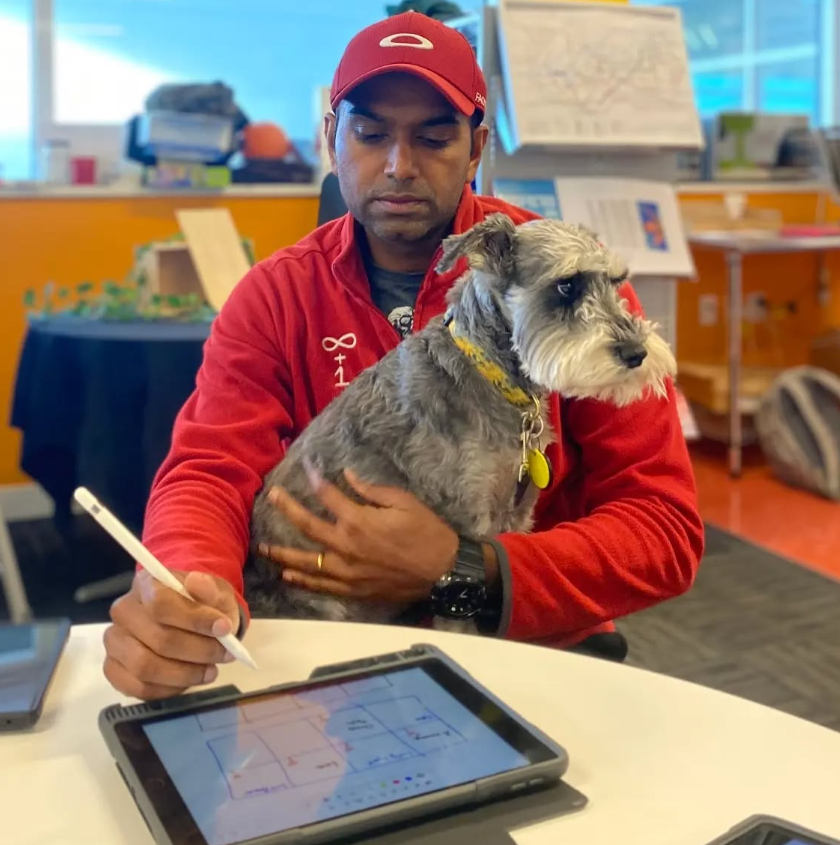

Dr. Tausif Malik: What inspired you to pursue a career in education, particularly in STEAM learning
Subash Chandar K: Mainly the experience from Disneyworld that led me to find my passion in teaching. STEAM came at a much later point in me career.
Dr. Tausif Malik: How did your journey as an educator lead to the creation of Infinity Plus OneSubash Chandar K: The creation of Infinity Plus One has a special and funny backstory. The name actually comes from how I express my love for my wife. We used to joke around, and she would ask me, “How much do you love me?” I’d give her a number, and she’d say, “You’re a mathematician — surely you can come up with something more special!” So, I told her, “I love you infinity plus one,” meaning that with every day I spend with her, my love grows just a little more than the day before. Initially, my YouTube channel was called “Maths OSC,” but one of my students, Teo Culjak, pointed out that people might not remember the name. I showed him my tattoo of “Infinity + 1” on my wrist, and he said, “That’s it! People will never forget that.” And that’s how Infinity Plus One was born — a blend of love, math, and a student’s insight that shaped what would become a national learning platform.
Dr. Tausif Malik: You have received several prestigious awards, including the Global Teacher Prize Top 10 Finalist. How have these recognitions shaped your work and aspirations?
Subash Chandar K: I think as teachers, we can sometimes feel confined within the four walls of our classrooms, and the work we do often goes unnoticed beyond our schools. For me, receiving these awards has been about much more than recognition — they’ve helped me become a better teacher. Every award comes with a set of criteria, and I always reflect on whether I’m truly living up to those expectations. Teaching is such a unique profession where success is hard to measure. In my first school, helping students simply pass was a huge achievement, while in my next school, the goal shifted to helping students achieve the highest possible grades. These awards provided me with a framework to push my limits and constantly improve my practice.
More importantly, they opened up an entirely new world of teaching. Applying for and receiving awards connected me with incredible educators worldwide, giving me access to fresh ideas and perspectives that transformed my teaching. I realized how valuable it is to step outside the classroom and learn from others. This journey has made me relentless in my pursuit of growth — I’m never fully satisfied with what I do, always looking for new ways to challenge myself and create more impactful learning experiences for my students.
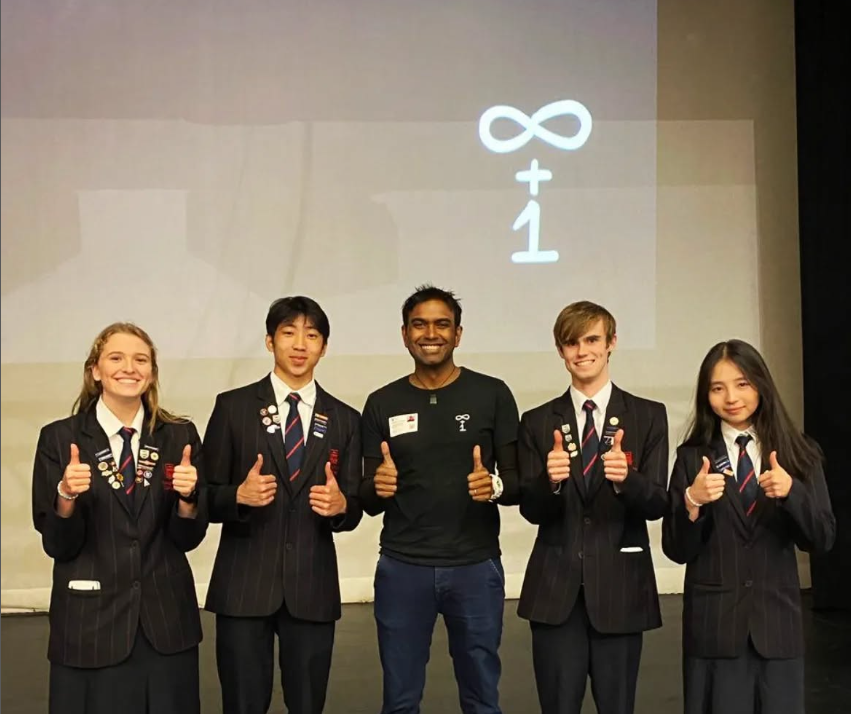

STEAM Education & Teaching Philosophy
Dr. Tausif Malik: Mathematics has been a core focus of your teaching career. What do you think is the biggest misconception students have about math, and how do you help them overcome it?
Subash Chandar K: The biggest misconception students have about math is the belief that they’re simply not good at it. This mindset often causes them to give up early, thinking that math is only for those with a “natural talent.” I passionately believe that math is one of the most powerful resilience builders — it’s a subject where you navigate an abstract world, trying to prove concepts that may not have an immediate real-world connection. Because of this, students can feel frustrated when they don’t grasp something right away, but I always emphasize that making mistakes is an essential part of learning math.
“Subash Chandar K has become a legend in NewZealand students approach him to take autograph on Calculator”
In my classroom and on my YouTube channel, I actively encourage mistakes. I tell my students, especially when preparing for exams, to never leave a question blank — even if they’re unsure of the answer. Leaving a question empty robs them of an opportunity to learn from the mistake. By trying, failing, and analyzing what went wrong, they build the persistence and problem-solving skills that are vital not just for math, but for life. I also remind my students that there’s often more than one way to solve a problem, and the key is to keep persevering.
Math teaches you to try different strategies and push through uncertainty — a skill that’s invaluable later in life when you face real problems without a clear solution at the back of the book. The resilience students build through math helps them face future challenges with confidence, knowing that persistence and creativity can lead them to answers, even when the path isn’t immediately clear.
Dr. Tausif Malik: What do you believe are the key challenges in making STEAM education more engaging for students?
Subash Chandar K: One of the biggest challenges in making STEAM education engaging is the gap between how teachers and students perceive technology. As educators, we often get excited about new tools and resources because we never had those opportunities when we were in school. We bring that enthusiasm to the classroom, expecting students to feel the same awe and gratitude for the technology they have access to. But for students, this technology is their norm — they’ve grown up in a digital world, so what seems groundbreaking to us can feel ordinary to them.


The real challenge lies in shifting our focus from the tool itself to the questions we ask. Instead of just introducing exciting tech, we need to design open-ended questions and problems that push students to explore, experiment, and create in ways that go beyond what we could imagine. We sometimes underestimate how capable and creative our students truly are, and by doing so, we can unintentionally limit their potential.
To truly engage students, we need to give them ownership of their learning — letting them tinker, fail, and discover unique solutions. STEAM education is most powerful when students feel like innovators, not just participants. It’s not about what the technology can do, but what students can do with the technology when given the freedom to explore, build, and dream beyond the classroom walls.
Dr. Tausif Malik: Can you share a story of a student whose life was significantly impacted by your teaching?
Subash Chandar K: This is one of the hardest questions to answer because every student story impacts me deeply. Every January, I receive over a thousand messages from students across New Zealand expressing gratitude for my YouTube videos, livestream tutorials, and exam resources. Knowing that my work helps change lives is incredibly humbling, but there are two stories that stand out.
In 2021, during a workshop at my school, a student from the Women in Engineering cohort noticed my mask, which had the Infinity Plus One symbol. She said, “That’s a really cool mask — do you know the guy?” When I pulled down the mask and told her I was the guy, she burst into tears. She told me the only reason she made it into engineering was because of my resources during lockdown — she attended my livestreams and worked through my calculus videos, which helped her get the grades she needed.


Another powerful moment was during a meet-and-greet in Wellington. A student, who didn’t even know the event was happening, walked by, saw me, and said, “You don’t know me, but because of you, my life has infinitely changed.” He shared how he lived in a small town and was desperate to earn a scholarship to study at AUT in Auckland. Three months before his exams, he found my channel, watched every lesson, and eventually achieved the grades he needed to get a full scholarship. He thanked me, saying that without my videos, he’d still be in that small town, unable to chase his dreams.
Stories like these remind me why I do what I do. Every video, every livestream, and every resource I put out there has the potential to change a student’s future — and that keeps me going.
Dr. Tausif Malik: How do you integrate emerging technologies into your teaching methods?
Subash Chandar K: Due to my constant love of learning and tinkering, I am an early adopter when it comes to technology and trying new things in classroom. Most of the time I am able to do this as I have accepted that there is a high chance that I will fail in many things I try in my classroom but at the same time excited when things do work out.
Projects & Innovations
Dr. Tausif Malik: The Butterfly Effect Passion project is an inspiring initiative. What motivated you to start it, and how has it impacted students and the community?
Subash Chandar K: This was a very small project where I had business that were throwing out acrylic rubbish which we collected, made jewelry and raised money for a charity.
Dr. Tausif Malik: Your YouTube channel Infinity Plus One has become a go-to resource for NCEA Mathematics students. What inspired you to start this platform, and what makes it unique?
Subash Chandar K: The inspiration behind starting my YouTube channel actually came from my students. One day, they kept asking the same question repeatedly, and out of pure frustration, I jokingly said, “Would you guys just prefer if I recorded the answer and put it on YouTube so you can watch it whenever you want?” That one conversation sparked an idea, and what started as a simple solution to save time grew into the Infinity Plus One channel as it is today. I quickly realized that students found it helpful to have 24/7 access to explanations they could revisit anytime, so I kept making videos — and it just kept growing from there.
What makes the channel unique is not just the content but the way I teach it. While many other channels focus on concepts, I combine concept breakdowns with detailed example walkthroughs. Of course, other channels do examples too, but students tell me they find my explanations easier to understand. I think it’s because of my own struggles with maths — I failed a lot during my studies, so I know what it feels like to not grasp something right away. That experience helps me break things down in a way that clicks for students, using their existing knowledge to scaffold new concepts.
Another unique aspect is my live streams. I noticed my channel views would spike around 8 or 9 p.m., so I decided to try live streaming at night to see how many students would show up. Sometimes it was just a few students, but other times I’d have 900 kids tuning in to study together. I realized that for many teens, their best learning happens outside of school hours, so I adapted to fit their rhythm. The live streams allow students to ask questions in real time, almost like free tutoring, and it’s been incredibly rewarding to see how many students rely on those sessions.
Finally, what truly sets my channel apart is that it’s free. I do all of this without charging because I know many students can’t afford private tutoring. I’ve also started visiting schools around New Zealand, and it’s been surreal to see how a “math teacher YouTuber” has become a bit of an inspiration. But at the core, I just love doing it — knowing that a kid out there, who might otherwise struggle alone, has someone to turn to for help at 9 p.m. is what keeps me going.
Dr. Tausif Malik: How did the use of Sphero robots in your curriculum enhance students’ understanding of mathematics?
Subash Chandar K: I discovered the Sphero robot, and it completely changed the way I taught trigonometry and bearings. At the time, I was struggling to help students understand the real-life applications of these concepts. I always had this vision of creating a “Treasure Island” or pirate ship activity with bearings, but I found it difficult to bring that idea to life in a way that truly clicked with students.
When I introduced the Sphero robots into my lessons, everything changed. Suddenly, students could physically see the impact of their calculations as they programmed the robots to move with precise angles and distances. It turned abstract concepts into tangible, hands-on learning. They weren’t just solving equations on paper — they were navigating the robots like ships, using trigonometry and bearings to steer them to specific locations.
What made Sphero so powerful as a teaching tool was that it balanced engagement with learning. Students loved driving the little robots around, but to make them move correctly, they had to carefully apply their maths skills. It was an immediate, visual form of feedback: if their robot ended up in the wrong place, they knew their calculations needed adjusting. This trial-and-error approach made learning feel more like an experiment, and students became far more invested in getting it right.
For me, Sphero was a fit-for-purpose tool that transformed what could be a dry, theoretical topic into an exciting, real-world challenge. It showed me the power of using technology not just as a gimmick but as a way to make learning more authentic and meaningful.
Dr. Tausif Malik: You’ve worked with NASA and various global education platforms. What has been your most exciting collaboration so far?
Subash Chandar K: I’ve been fortunate to collaborate with some amazing organizations, both in New Zealand and internationally. One of the most memorable experiences was visiting Space Camp in 2019, where I learned invaluable lessons that I still bring into my classroom today. After COVID hit, travel became tricky, but those experiences continue to shape how I teach.
In New Zealand, I’ve partnered with the Wonder Project for their rocket challenge, which ties beautifully into the lessons I learned at Space Camp. It’s been a fantastic way to inspire students with hands-on STEM learning. I also had the chance to work with Rocket Lab on their initial education program — although that program is currently on pause, it was an exciting opportunity to connect students with real-world space exploration.
For Infinity Plus One, the most exciting partnership has been with Casio. They’ve been incredibly supportive, providing calculators and watches for giveaway live streams and helping students who can’t afford their own devices. When I do school visits, I often call ahead to see if there are students in desperate need of a calculator, and Casio steps in to help. It’s been heartwarming to see how much of a difference that can make for students. These collaborations have not only enriched my teaching but have also given my students opportunities and resources they might not have had otherwise.


Leadership & Professional Development
Dr. Tausif Malik: As a STEAM Learning Designer, what strategies do you use to encourage innovation among both students and teachers?
Subash Chandar K: This is a simple one – Give it a go! Support both teachers and students with the same mentality.
Dr. Tausif Malik: You have been a speaker at various international conferences. What key messages do you hope to convey to educators worldwide?
Subash Chandar K: I’ll share my favourite quote here – “To be able to sacrifice what you are, for what you could become!”
Dr. Tausif Malik: How do you balance your roles as an educator, public speaker, and content creator?
Subash Chandar K: This is a question I get asked a lot, and to be honest, the biggest reason I’m able to balance all these roles is because of my wife, Lucky. She has been my unwavering support system, holding me up relentlessly as I pursue my passions. I think sometimes we overlook the quiet, behind-the-scenes work that the partners of educators do — but in my case, it’s been life-changing.
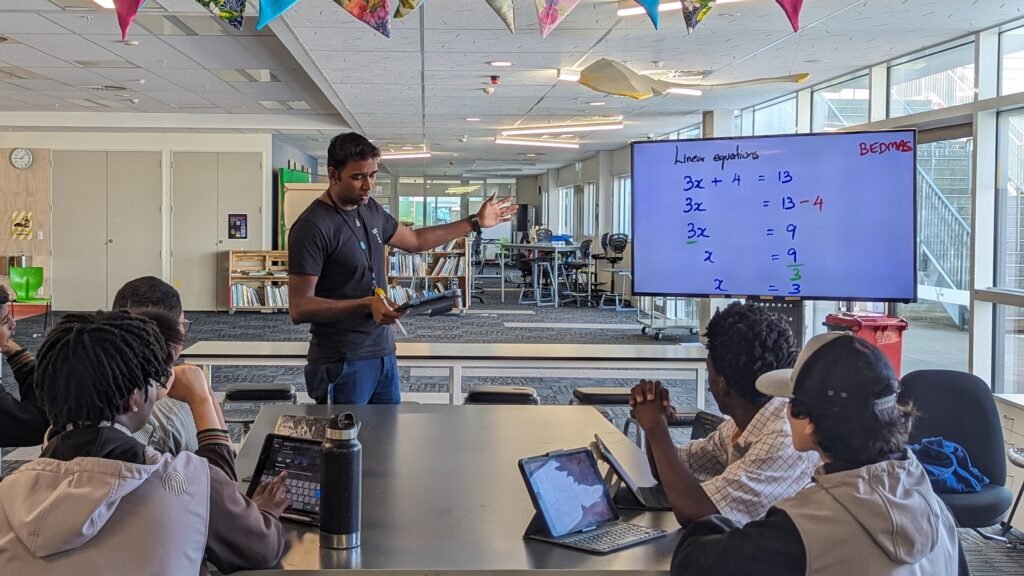
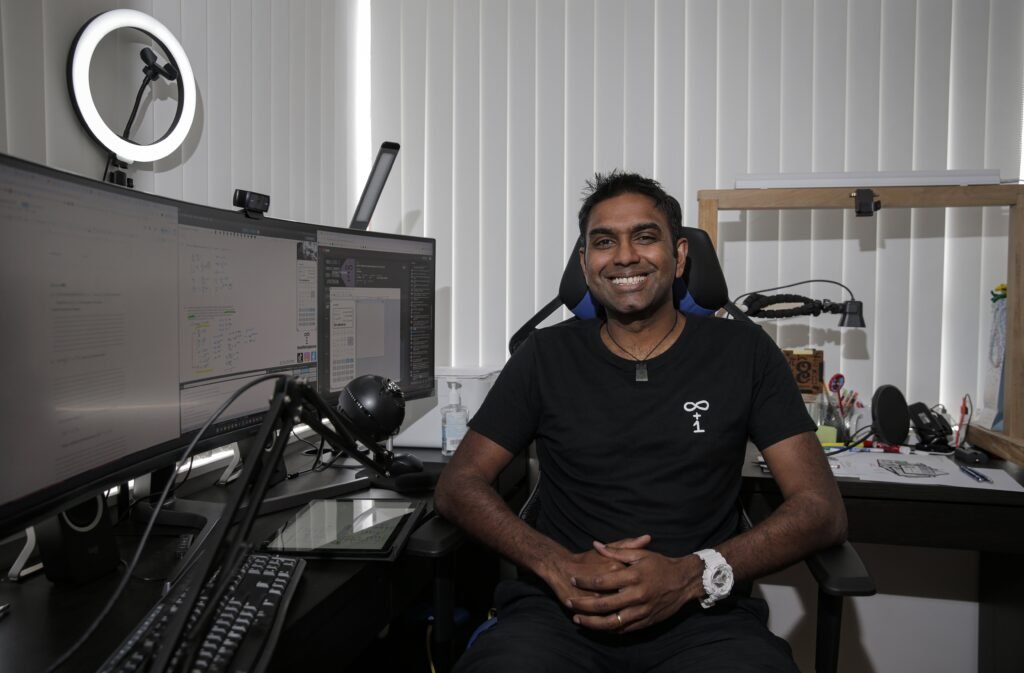
Subash is an Award winning maths teacher who gives tips on how students across all subjects can best prepare for NCEA exams next month.
NZME Photograph by Alex Burton 23 October 2024
She’s the one who checks in and reminds me to take care of myself. If I haven’t exercised, she’ll gently nudge me to go for a run. If I’ve forgotten to book a counseling session or neglected my spiritual well-being, she’ll remind me. Even when I haven’t done a live stream in a while, she encourages me to reconnect with students, knowing how much joy it brings me.
I tend to get hyper-focused when I work, losing track of time as I chip away at projects for hours. But Lucky helps me stay grounded. She notices when I’ve been working too much and encourages me to catch up with friends or take breaks. That balance is what keeps me from burning out.

Practically, I structure my day around my family. I spend time with my wife, son and our dog whenever I can, and most of my work happens after 8 p.m. once my son is asleep. If an idea strikes, I might wake up at 3 a.m. and start working on it. Other times, when I’m exhausted, I allow myself to sleep for 10 hours.
But through it all, the reason I’m able to juggle everything is because of Lucky. Without her, I’d probably be completely burnt out. So, thank you, Lucky — I truly couldn’t do any of this without you.
Advice, Fun, & Future Outlook
Dr. Tausif Malik: What message would you like to give students on how to excel in mathematics and prepare for NCEA exams?
Subash Chandar K: My biggest piece of advice for students is simple: keep making mistakes and learn from them. Too often, students give up too easily without giving themselves the chance to improve. Mathematics is one of those subjects where making mistakes is part of the journey to success. The more mistakes you make, the more you learn. It’s not about getting everything right the first time; it’s about understanding where you went wrong and how to fix it.
In addition, practicing past exam papers before the actual exam is a crucial strategy. It helps you get familiar with the types of questions, how the exam is structured, and how marks are awarded. This practice builds confidence and prepares you to approach the exam with a better understanding of what to expect.
So, embrace your mistakes, keep practicing, and you’ll find yourself not only becoming better at maths but also seeing improvements in your exams.
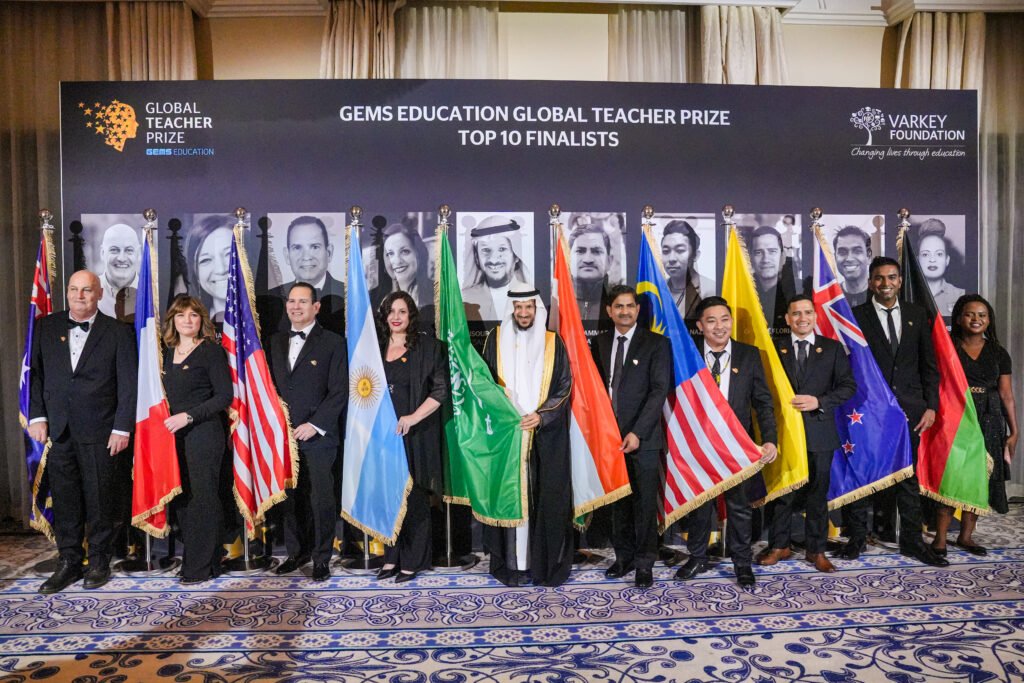

Dr. Tausif Malik: If you could design the ultimate STEAM classroom of the future, what would it look like?
Subash Chandar K: For me, the ultimate STEAM classroom of the future would be one that is accessible 24/7, where students can come in and learn at any time. Right now, many students are restricted by the typical school hours of 9 to 3, which can limit their ability to explore ideas and test concepts outside of class time. Sometimes, if inspiration strikes or they have an idea they want to explore, they simply don’t have the resources or space to do so.
Subash Chandar K: Imagine if students had access to a dedicated space where they could tinker, create, and experiment whenever they wanted, much like libraries that close after a certain time. Having a 24/7 learning environment would allow students to access tools, resources, and opportunities for learning at any hour. Of course, there are considerations around safety and supervision, but if we could find ways to make this kind of access a reality, it would make a tremendous difference in the way students engage with STEAM subjects and develop their creative and critical thinking skills.
Dr. Tausif Malik: When you’re not teaching, what are some of your favorite hobbies? How do they influence your approach to education?
Subash Chandar K: My favourite hobbies include spending a lot of time outdoors with my dog, taking him for walks, and doing Sudoku puzzles every day. I also have a small obsession with fantasy NRL, though it’s only for a short while. But most of the time, I’m creating laser-cut gifts for my co-workers or making art pieces using a laser cutter. Occasionally, I sell some of the pieces on the marketplace, but I mostly enjoy creating them for fun. I also spend time playing multiplayer games with my son, particularly Minecraft and other games on the PS4. Additionally, I love spending time with my wife, chatting about random things, and we’ve recently developed an obsession with sharing reels with each other.
Dr. Tausif Malik: If you could have dinner with any three people—living or historical—who would they be and why?
Subash Chandar K: My wife and son will take the two spots. The third spot will be reserved for Hans Zimmer, I have great respect for all the music he has created which has helped me through some rough times.
Dr. Tausif Malik: Finally, what message would you like to share with your audience—students, parents, and educators—who follow your work?
Subash Chandar K: My biggest message I would share with students, parents, and educators who follow my work is a simple one about maths and looking after teachers. Firstly, there’s a bit of a global dislike towards maths, and I encourage everyone to give it a go and keep persevering. Just because you’re bad at maths doesn’t mean your child or siblings will be. It’s a mindset that needs to change. When someone says they’re bad at maths, what they’re really saying is, ‘I’ve given up.’ Instead, we should encourage the mindset of, ‘I’m not great at maths, but I’m willing to work towards getting better.’
Secondly, we must look after our teachers. Teachers are the dream builders, the change-makers, and the guardians of tomorrow. Unfortunately, there’s not enough respect for them right now, and we’re in a dangerous situation. The minds of the next generation need shaping and support, especially in today’s challenging environment. If we don’t look after our teachers, we’re jeopardizing the future.

